
Xinjiang Kanas
- Chinese name: Kanas Scenic Area
- Location: North of Burqin County, Altay Prefecture, 150 kilometers away from the county seat
- Opening hours: May 1st-October 15th 08:30-20:30 (last admission 20:00); October 16th-April 30th 09:00-19:30 (last admission Admission 19:00)
- Attraction level: AAAAA level
- Ticket price: 160 yuan/person for 2 days in peak season, 80 yuan/person for 2 days in off-season
- Land area: 10030 km²
- Famous scenic spots: Kanas Lake, Moon Bay, Kanas Fish Watching Platform, Wolong Bay
- Country: Altay, Xinjiang Autonomous Region, China
- Suggested play time: 2-4 days
- Suitable season to visit: June and September
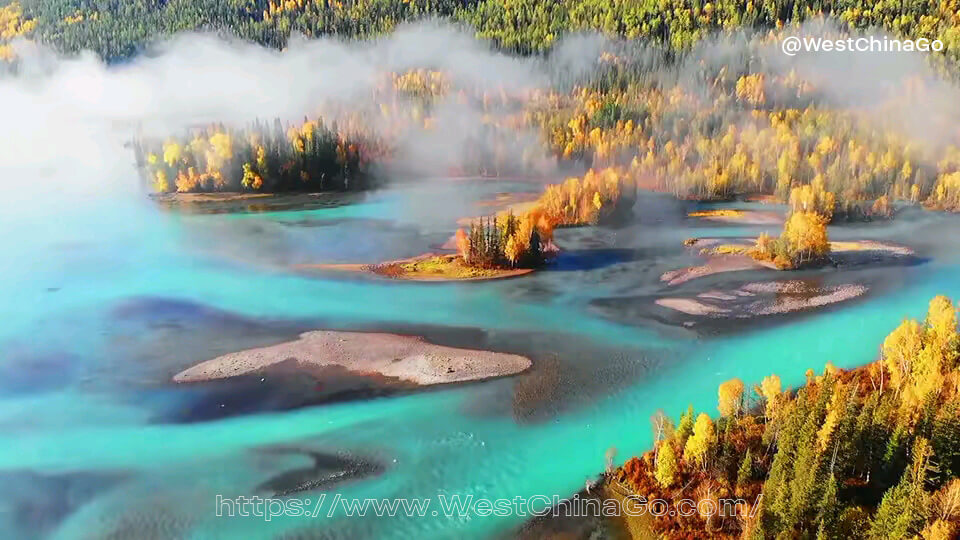
Xinjiang Kanas
Discover the Mystical Beauty of Kanas: Xinjiang’s Hidden Gem
A Natural Wonderland
Kanas, located in the northern part of Xinjiang, is a paradise for nature lovers. This picturesque region is home to the stunning Kanas Lake, known for its changing colors that range from turquoise to emerald green. Surrounded by dense forests and snow-capped mountains, Kanas offers an idyllic escape into nature’s lap. Visitors can explore the pristine waters of the lake, hike through the lush forests, or simply bask in the serenity of this unspoiled wilderness.
Home to Diverse Wildlife
Kanas is not just about breathtaking landscapes; it is also a sanctuary for a variety of wildlife. The region is home to rare species such as the snow leopard and the Altai argali, making it a haven for wildlife enthusiasts and photographers. Birdwatchers will be delighted by the sight of various migratory birds that visit the area, adding to the region’s ecological richness.
Cultural Richness of Tuva Villages
Nestled within the Kanas region are the charming Tuva villages, where visitors can experience the traditional lifestyle of the Tuva people. These villages offer a glimpse into the ancient nomadic culture, with their unique wooden houses, traditional costumes, and captivating folk music. Engaging with the Tuva community provides a deeper understanding of the cultural tapestry that defines this remote part of Xinjiang.
Adventure and Exploration
For adventure seekers, Kanas is a dream come true. The region offers a plethora of outdoor activities, from trekking and horseback riding to fishing and camping. The stunning landscapes of Kanas provide the perfect backdrop for adventurous pursuits, allowing visitors to connect with nature in the most exhilarating ways.
Why Visit Kanas?
Kanas is a hidden gem that combines natural beauty, cultural richness, and thrilling adventures. Its unique landscape and serene environment make it a must-visit destination for those seeking an off-the-beaten-path experience. Whether you’re a nature lover, a cultural explorer, or an adventure enthusiast, Kanas promises a journey filled with wonder and discovery.
Embark on a journey to Kanas and uncover the magic of this extraordinary destination. Let the landscapes, wildlife, and cultures of Kanas leave you spellbound and inspire a deeper connection with the natural world.
Kanas Scenic Area is located in the middle of the Altai Mountains in Xinjiang, on the borders of China, Kazakhstan, Russia, and Mongolia, with an area of 10,030 square kilometers.
The core essence of the Kanas National Scenic Area is that the glaciers are strongly planed and eroded, and the ice and rocks cover the valleys, forming the final ridges and lakes. The lake is 1375 meters above sea level. The lake is shaped like a crescent moon, 24.5 kilometers long, 1.9 kilometers wide on average, 90 meters deep on average, and 188.4 meters deep at its maximum, with an area of 69,000 mu and a water storage capacity of 4 billion cubic meters.
There are 55 large and small scenic spots in Kanas Scenic Area, belonging to 33 basic types, mainly including Hanas National Nature Reserve, Kanas National Geological Park, Baihaba National Forest Park, Jiadengyu National Forest Park, Kanas Nasi River Valley, Hemu River Valley, Naren Grassland, Hemu Grassland and Hemu Village, Baihaba Village, Kanas Village and other eight famous natural landscape areas and three major cultural landscape areas at home and abroad
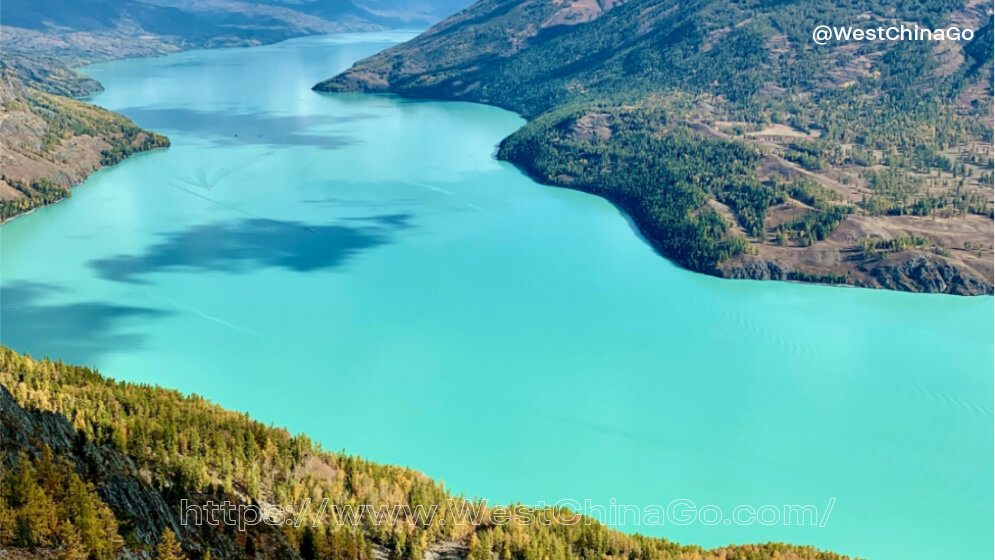
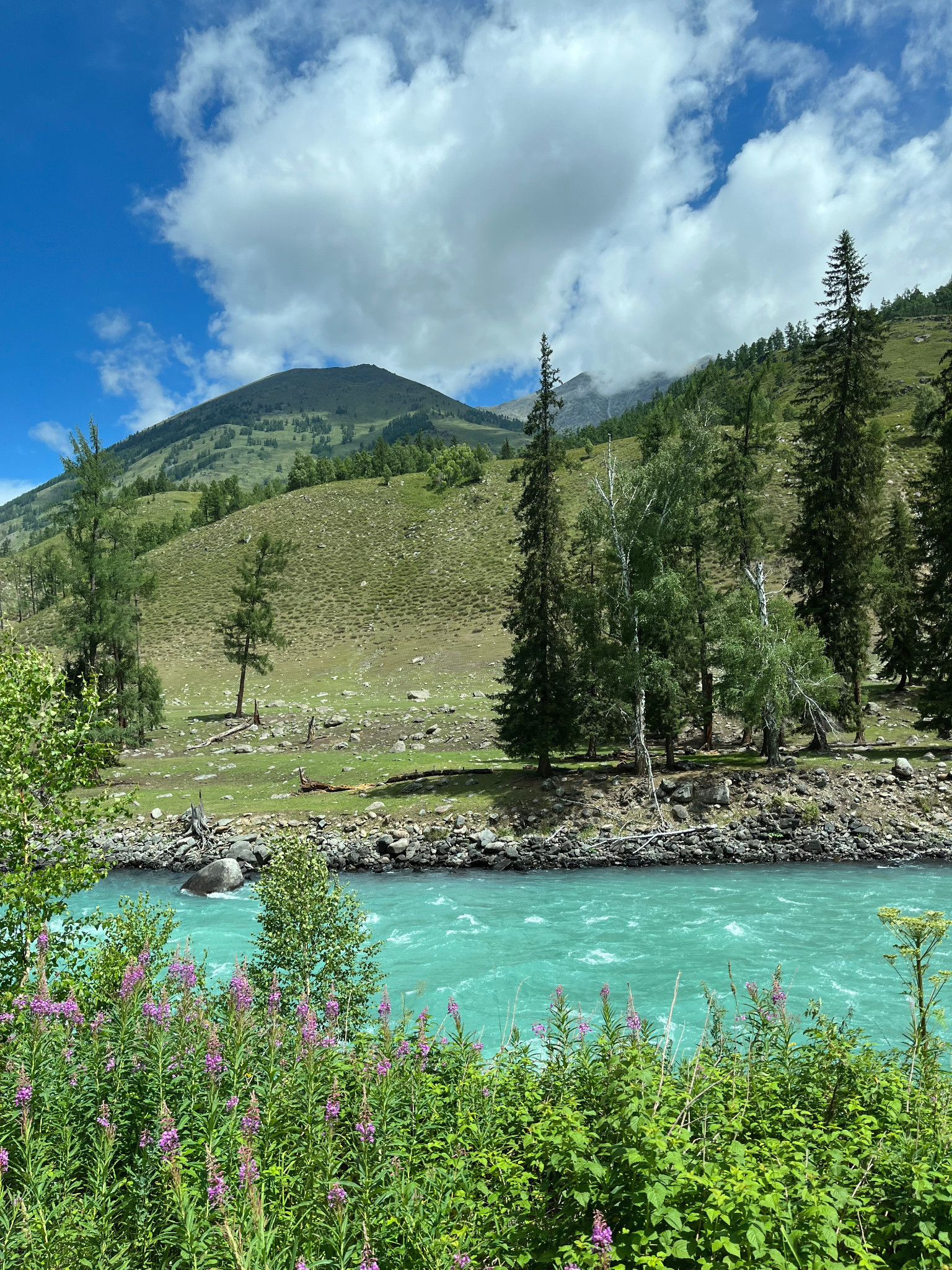
Xinjiang Kanas Photo
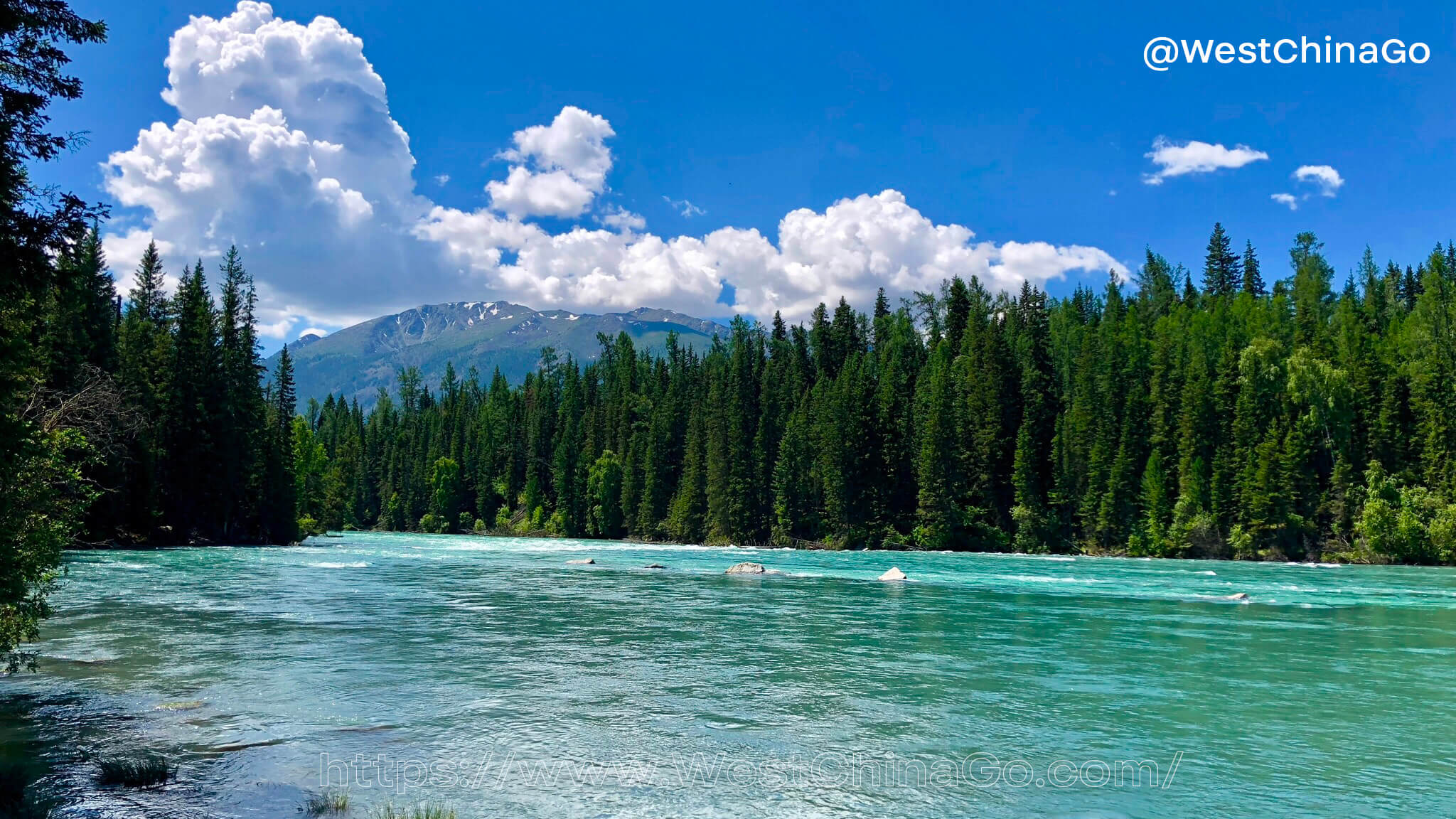
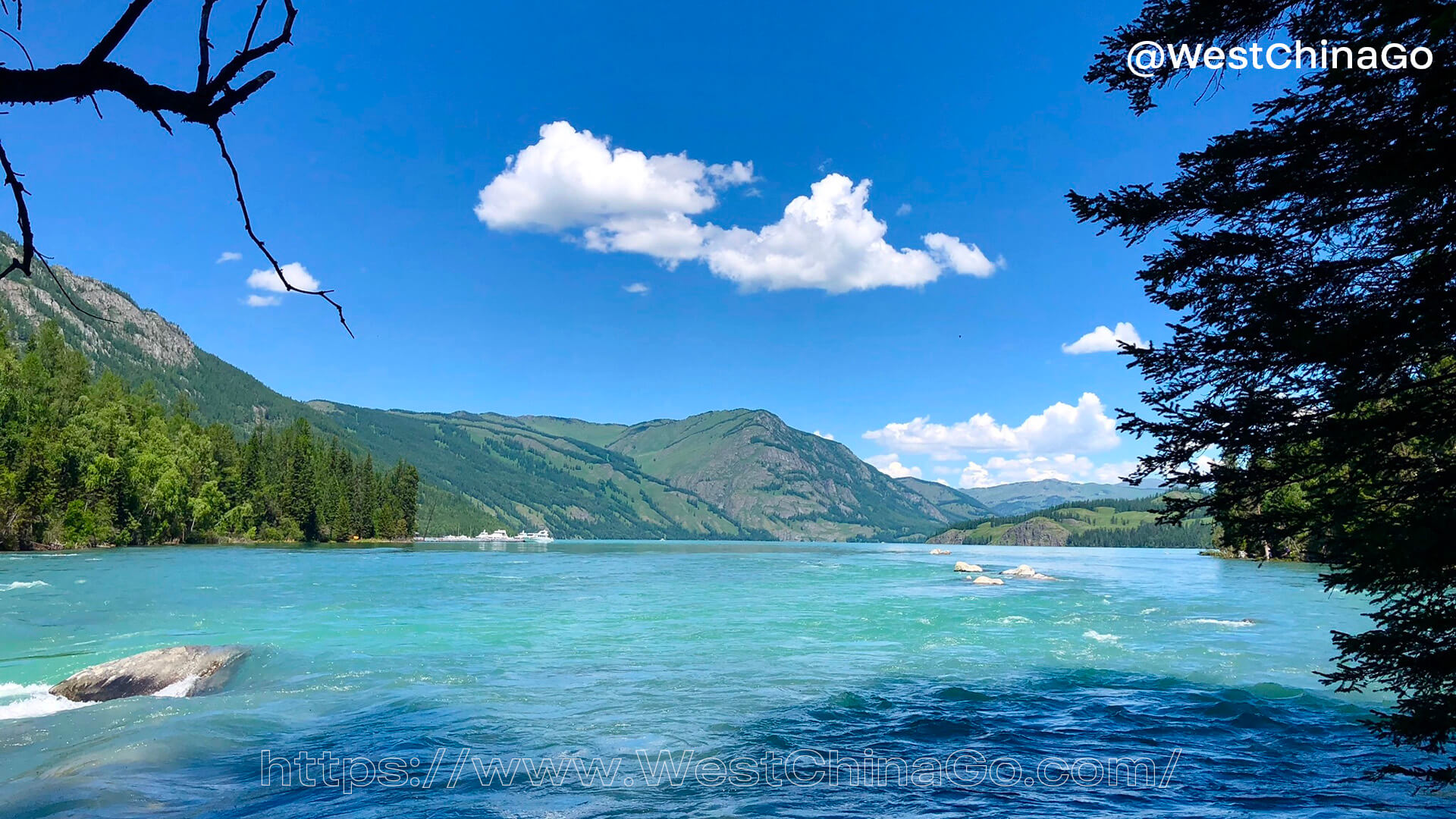
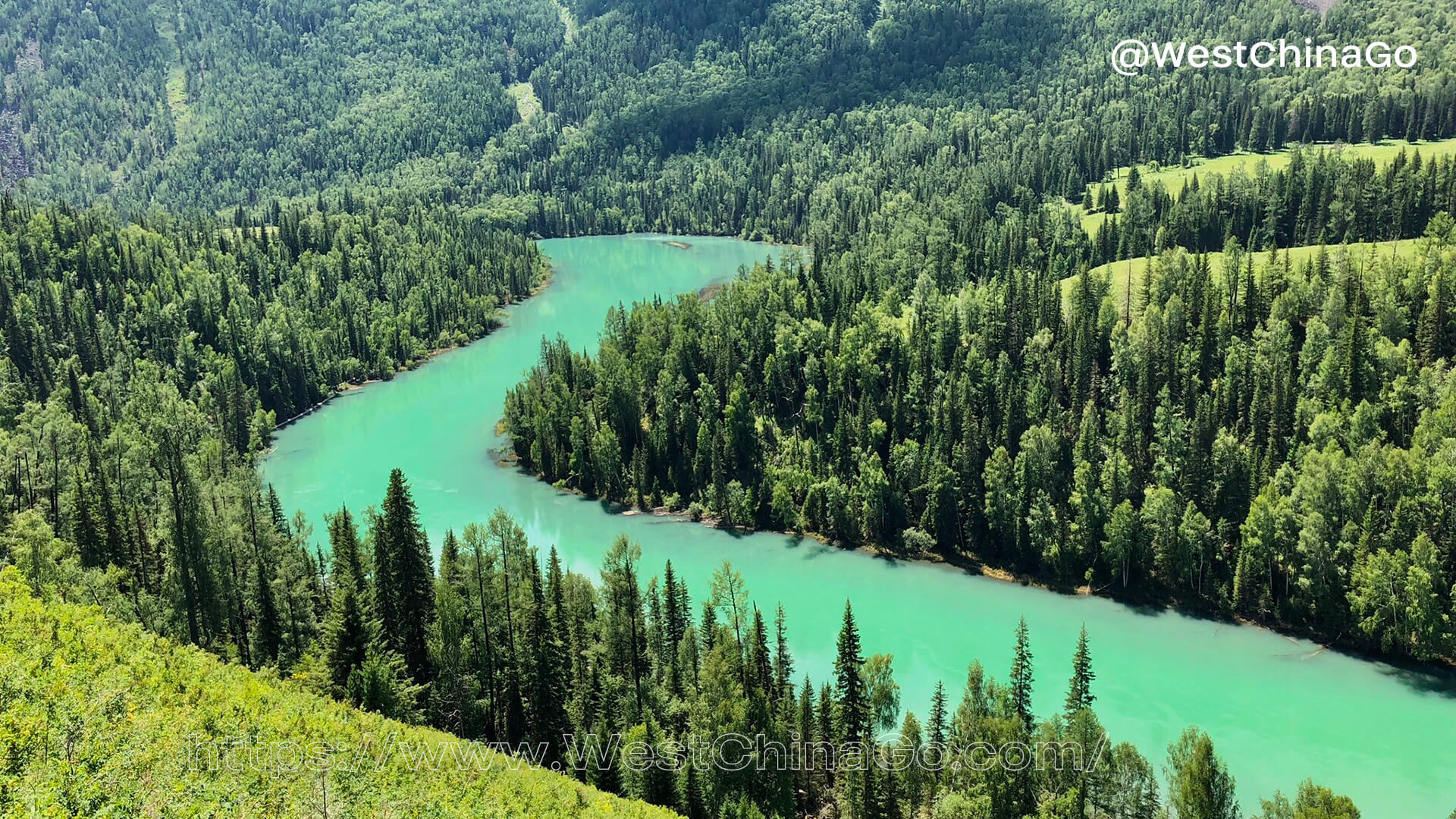
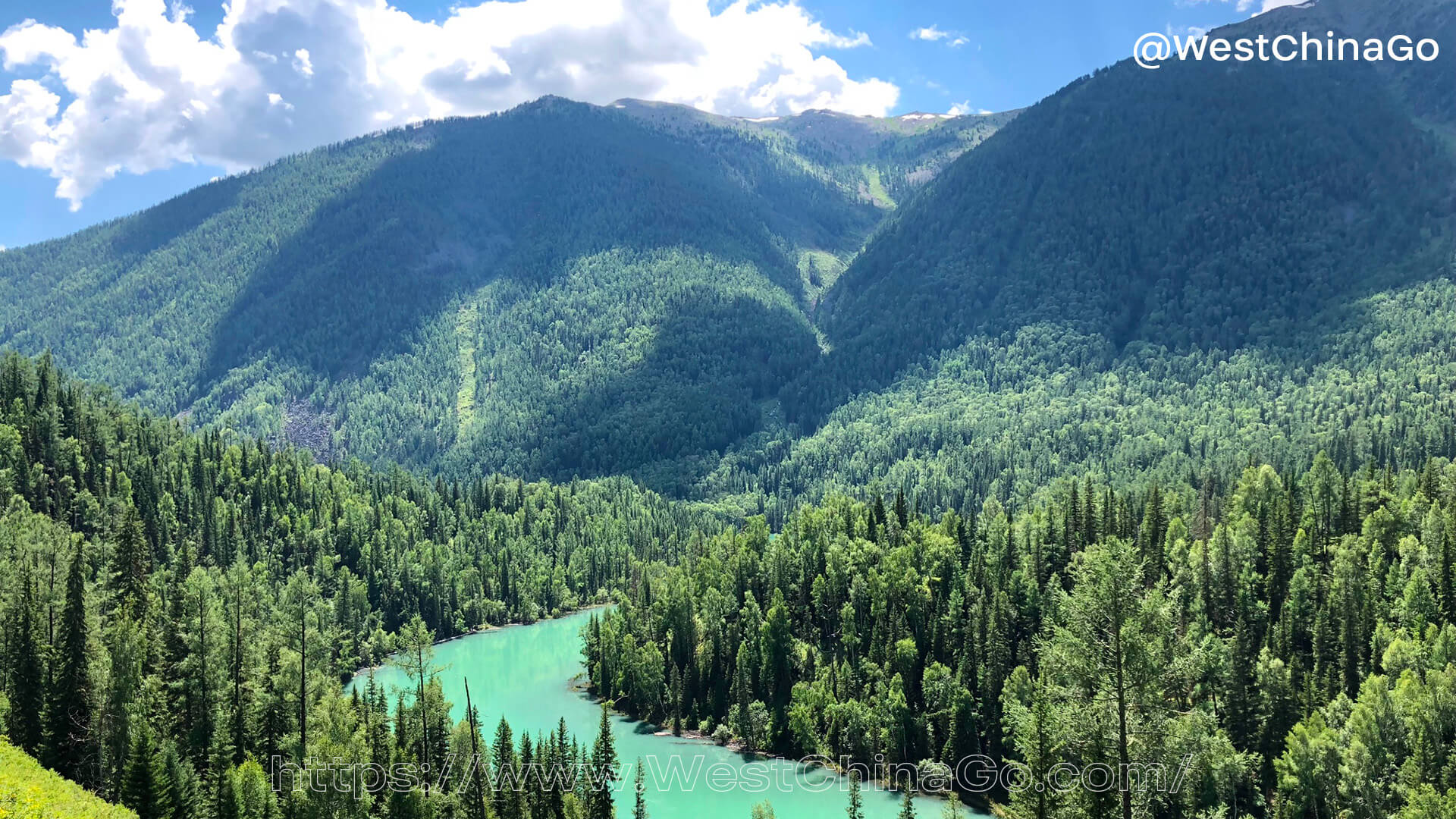
Xinjiang Kanas Tourist Map


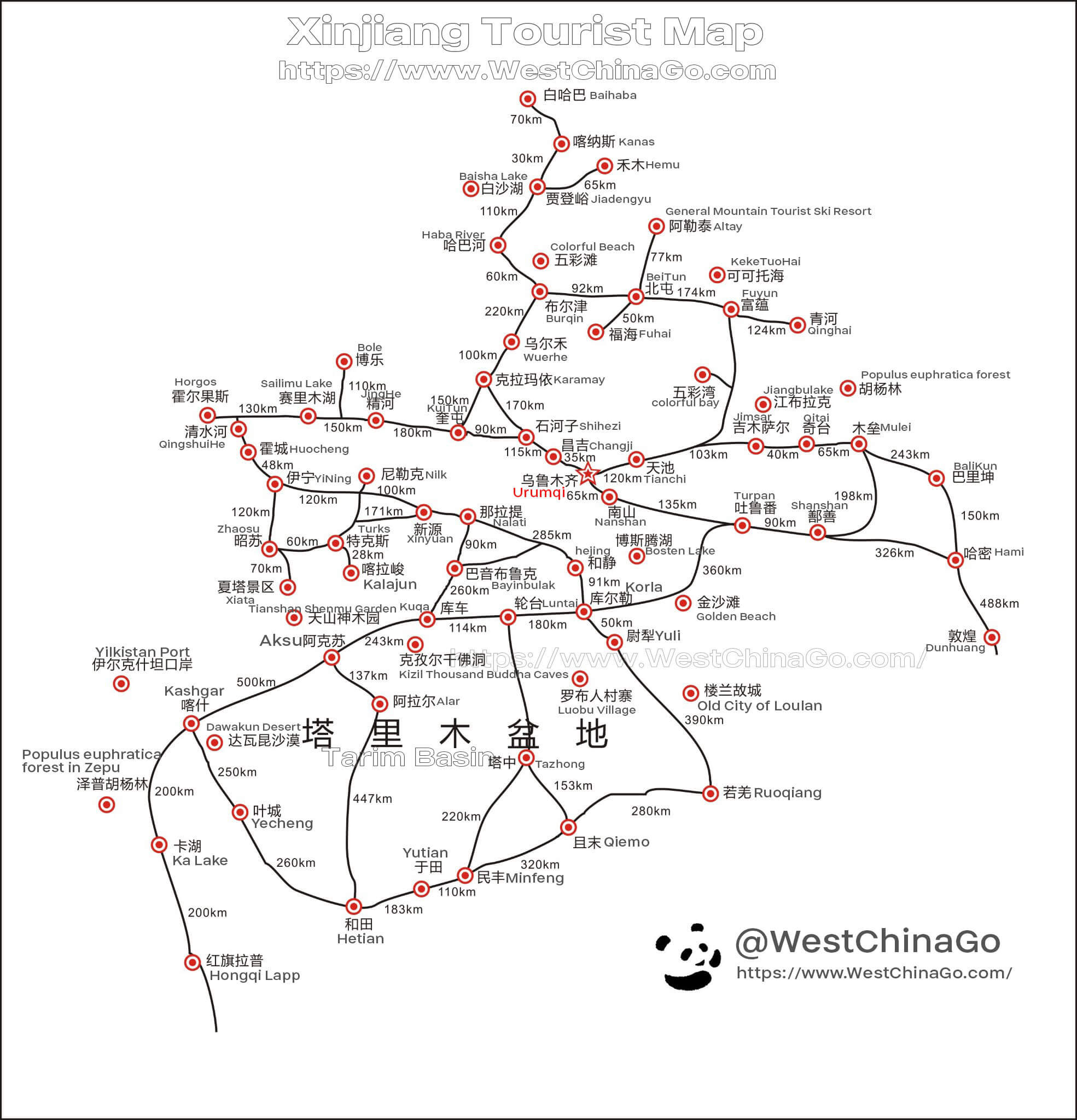
Kanas Things To Do
Twin Lake Cruise
Tickets for the Kanas Shuanghu Cruise started on June 1, 2015. There are 6 boats in Shuanghu: 2 boats with 75 seats, 1 boat with 58 seats, 2 boats with 38 seats, and 1 speedboat with 12 seats.
Shuanghu Cruise Line: Shuanghu Wharf – Sandao Bay (going ashore for viewing) – Return. Shuanghu Wharf is located at the third wharf on the east side of Kanas Lake, and the round-trip time is about 1 hour. Where to buy tickets: Shuanghu Wharf Ticket Office, Kanas Transfer Center Ticket Office. Ticket price: 120 yuan / person
Hemu rafting
Hemu rafting is 9 kilometers long and takes about an hour. The rafting team has 20 rafting boats and 40 drifters. They are in the clear and clean Hemu River. One of the big ancient towns and one of the top ten leisure villages in China, Hemutuwa Village brings simplicity and tranquility.
Hemu Ice and Snow Park
Hemu Ice and Snow Park, which was first developed in the winter of 2016, incorporates all the elements of ice and snow fun in the majestic snowfield mountains. A total of 36 winter ice and snow entertainment projects are launched here, including folk performances in the viewing area, ice and snow events in the experience area, herdsmen folk customs events, snowmobile skiing ice and snow sports events, Hemu snow area crossing line sightseeing line and folk home visit line, snow cat scenery tour items etc.
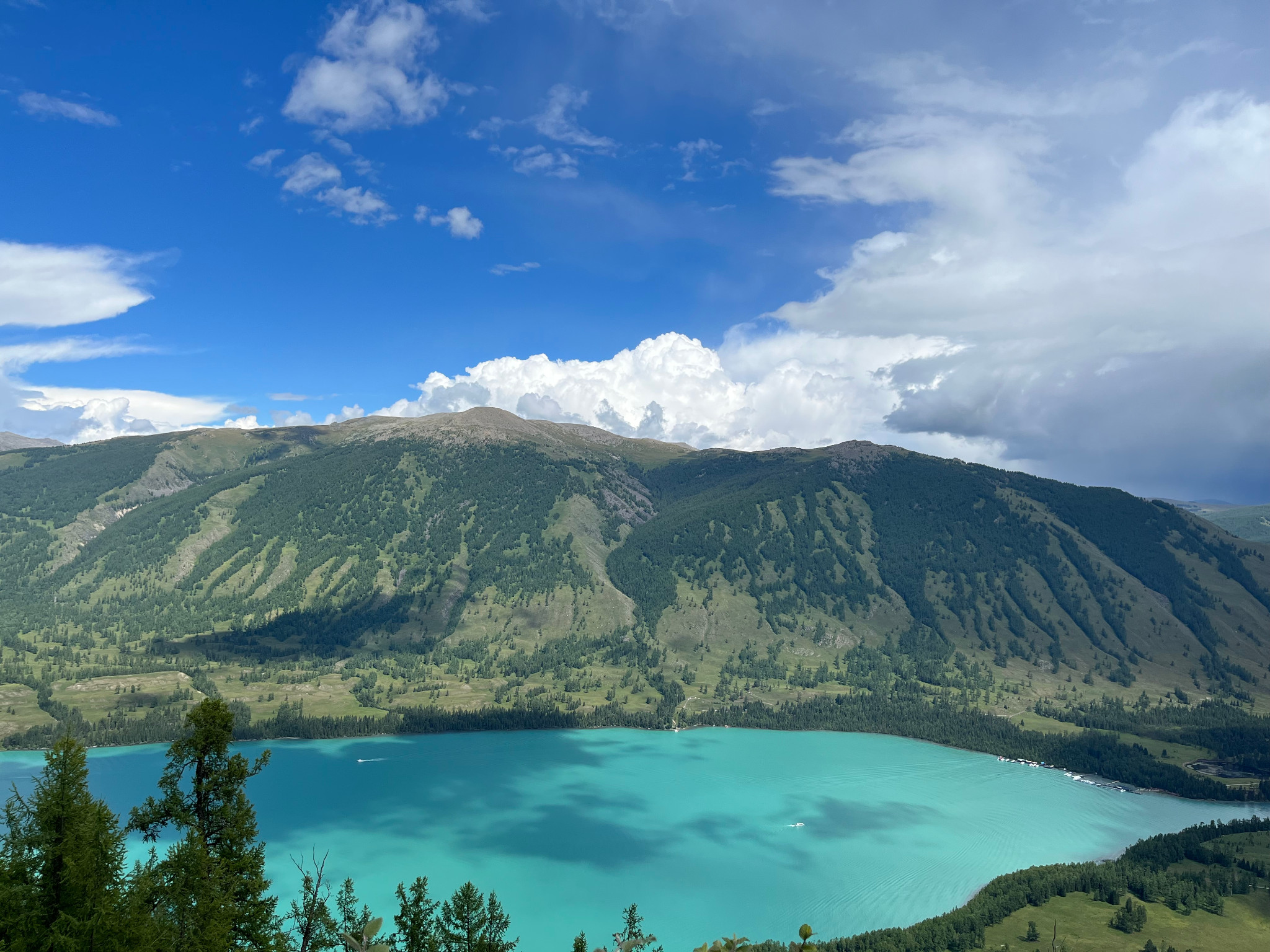
Xinjiang Kanas Travel Guide
Kanas Scenic Area
There are 55 large and small scenic spots in Kanas Scenic Area, which belong to 33 basic types, mainly including Hanas National Nature Reserve, Kanas National Geological Park, Baihaba National Forest Park, Jiadengyu National Forest Park, Kanas River Valley, Hemu River Valley, Naren Grassland, Hemu Grassland and Hemu Village, Baihaba Village, Kanas Village and other famous landscape areas and three cultural landscape areas at home and abroad
Kanas Lake
Kanas Lake is the core essence of Kanas National Nature Reserve. It is strongly planed and eroded by glaciers, and the surface of ice and rocks is covered with valleys, forming the final surface ridges and forming lakes. The lake is 1375 meters above sea level. The lake is shaped like a crescent moon, 24.5 kilometers long, 1.9 kilometers wide on average, 90 meters deep on average, and 188.4 meters deep at its maximum, with an area of 69,000 mu and a water storage capacity of 4 billion cubic meters. Around the lake is a verdant coniferous and broad-leaved mixed forest, which is connected with the vast mountain grassland.
Wolong Bay
Wolong Bay is located on the way from Burqin County to Kanas, 140 kilometers away from the county seat and 10 kilometers away from Kanas. The lake is surrounded by dense forests, blooming flowers, and green grass. The small islands in the lake have beautiful scenery. The boulders at the lake’s inlet reach the middle stream, and the surging waves beat the boulders, and jade beads splash. At the outlet of the lake, there is a wooden bridge flying east and west. Standing on the bridge, to the north is a mirror-like Wolong Bay, and to the south is the roaring Kanas River. About 1 km up the Kanas River from Wolong Bay, you will see a blue crescent-shaped lake bay in the canyon, which is Moon Bay.
bilberry island
Bilberry Island is next to the island in the center of Kanas Lake. There is a peninsula extending into the lake. The moss under the forest on the island is covered with unique bilberry bushes. People call it Bilberry Island.
taiga corridor
The term taiga is originally of Russian origin and refers to the area of coniferous forest near the poles bordering the southern edge of the tundra. The term refers broadly to boreal forests in cold temperate zones. In the cold temperate zone of the northern hemisphere, taiga forests spread all over North America and the northern part of Eurasia, forming a vast expanse of forest sea, constituting the largest forest ecosystem in the world
The total length of the Taiga Forest Corridor is 4.5 kilometers, which is concentrated in the essence of the West Siberian Taiga Forest. The corridor faces the sparkling Kanas Lake in the west and the majestic mountains in the east. Taiga forest swamps, the king of the Taiga forest, giant root carved walls and many other attractions
Guanyutai
Guanyutai, the round-trip shuttle bus is 20 yuan/person, it is a must-see spot in Kanas, it was built in 1987, and it was called Guanyutai after this reconstruction. Why is it called Guanyutai? I think there are three reasons. First of all, those who call the pavilion must have the top pavilion larger than the bottom platform, and this reconstruction is because the bottom platform is larger than the top pavilion, and the platform is larger than the pavilion, so of course it should be called a platform. In addition, Pavilion is suspected of being self-enclosed, while Taiwan is open to the outside world, which is in line with the requirements of the progress of the times. Secondly, compared with the word pavilion, the homophony is too particular. For ordinary people, the pavilion is stopped, and the platform is lifted. I spend money to travel in order to seek happiness and auspiciousness. Why should I stop and not lift it? Who doesn’t want to make progress in life and achieve success in career after traveling in Kanas? Again, looking up at Guanyutai from the lake at the bottom of the mountain, it is just like an incense platform sitting on the west mountain. If there are clouds and mist in the sky or the scene of sunset and sunset, the clouds on the incense burner platform will be filled with auspicious clouds and fairy spirit. These three are the reasons why calling a table is better than calling a booth.
Climb to Guan Yutai is the last exclamation point in the Kanas travel itinerary. It is not enough to appreciate the ultimate beauty of Kanas without going to the Guanyutai; it is not enough to understand the true meaning of life without going to the Guanyutai.
Kanas Accommodation information
In addition to the hotel accommodation at the Jiadengyu Ticket Station outside the Kanas Scenic Area, you can also stay in the Kanas Scenic Area. There are inns built by herdsmen themselves, and there are also holiday villas suitable for Han people. One is Kanas Villa. , one is Linhai Villa.
Linhai Villa
Linhai Villa is located on the edge of virgin forest on the east side of Kanas Village, where Tuva people gather, overlooking the Kanas River Valley and the primitive features of Tuva villages.
Hemu Villa
Hemu Villa is located in the valley 1 km east of Hemu Village in Hemu Scenic Area, surrounded by glaciers, snow mountains, virgin forests, and grassland flowers. The village is adjacent. The hotel’s facilities are all custom-made solid wood furniture with a strong Tuva style, and are configured in accordance with the standard of a four-star hotel. It is only 2 kilometers away from the Harden viewing platform. The villa has a total of 115 standard rooms, single rooms, and suites. All rooms are heated by floor heating, equipped with digital TV, computer, and Internet broadband.
Burqin Kanas Tourist Hotel
Kanas Tourist Hotel is located in the county seat of Burqin County, close to Burqin County Government, with convenient transportation, complete facilities and beautiful environment


